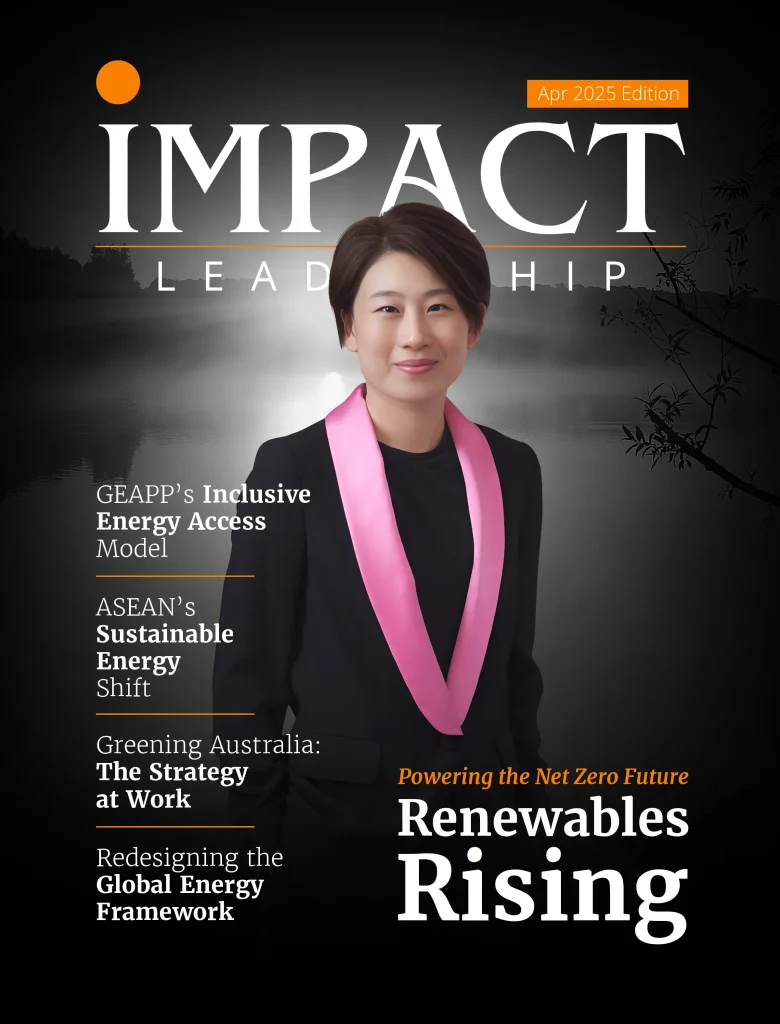Alison Scotland has spent her career navigating the intersections of science, policy and collaboration, all in pursuit of a more sustainable built environment. As the CEO of the Australian Sustainable Built Environment Council (ASBEC), she stands at the forefront of an industry poised to drive Australia’s transition to a net-zero, nature-positive future. “The built environment has the technology and the know-how to decarbonise now,” she says, “but we must do this at speed and scale to smooth the way for other harder-to-abate sectors and achieve Australia’s emissions reduction targets.”
Her leadership is as much about breaking down technical barriers as it is about fostering the relationships and dialogue necessary to accelerate change.
We know that the built environment provides the cheapest and quickest way to reduce emissions. The opportunity cost of not acting quickly is stark. We can’t afford to waste time.
With a background in environmental science and a deep understanding of regulatory frameworks, Scotland’s approach is both pragmatic and ambitious. From her early work in water efficiency to shaping national standards, she has honed a leadership style rooted in empathy, collaboration and evidence-based decision-making. At ASBEC, she champions policies that make buildings healthier, more efficient, and more resilient, while also ensuring the industry has the tools and incentives to move forward. In this conversation, Scotland shares insights into the challenges and opportunities shaping Australia’s built environment, the importance of diverse leadership and why the time for action is now.
The built environment plays a crucial role in achieving sustainability goals. What unique perspectives do women bring to leadership in this sector, and how can we encourage more women to take on decision-making roles in the industry?
Alison Scotland: There are so many inspirational women in the built environment sector, and I count myself lucky to have many of these women heading up ASBEC member organisations and engaged in our processes. Action to improve the sustainability and circularity of our buildings and urban spaces is a massive team sport. It requires collaboration across sectors, governments, organisations, and communities. I’ve loved the safe space that ASBEC provides for discussion and information exchange between all these different bodies and feel that this helps to drive real lasting impact.

Personally, I have a strong sense of empathy and a lack of ego, and I find that these are important qualities that help achieve progress in the sustainability space. I’ve relished building genuine relationships with a whole range of wonderful people over the years, and every one of them plays a vital role in unlocking innovative solutions to the complex problems we need to tackle. I’m thrilled to be leading an organisation that punches well above its weight in terms of built environment sustainability policy impact.
We must counter the myth that sustainable buildings cost more. Investing in efficiency and electrification results in healthier, more resilient spaces that cost less to run.
As for how we can encourage more women to take on decision-making roles in the industry – I’m a true believer of the adage, “You can’t be what you can’t see”. We know how low the participation rate of women is in the Australian construction sector. We also know how bad the stats are around female representation at the executive or board level. Last year ASBEC worked on leveraging the power of our collective knowledge and expertise on diversity and inclusion programs to try and accelerate efforts to improve female retention and increase leadership participation for women in all parts of the built environment sector. We were honoured to bring a cohort of women through a “future leaders” program where participants were able to share experiences, have one-on-one coaching and attend a series of MasterMind leadership workshops. It was so wonderful to engage with all these amazing women who are going to help build our sustainable future…
Read the full story in the March 2025 issue of Impact Leadership magazine.











